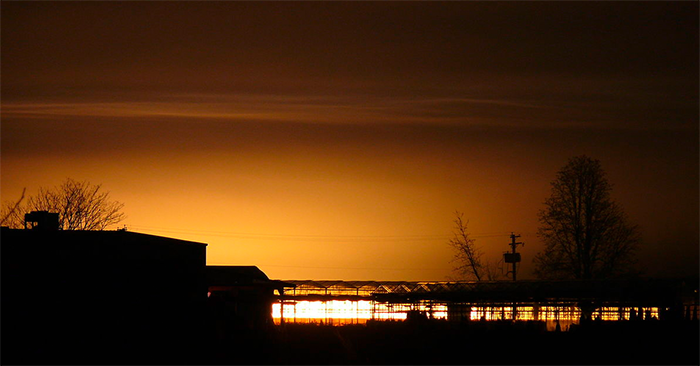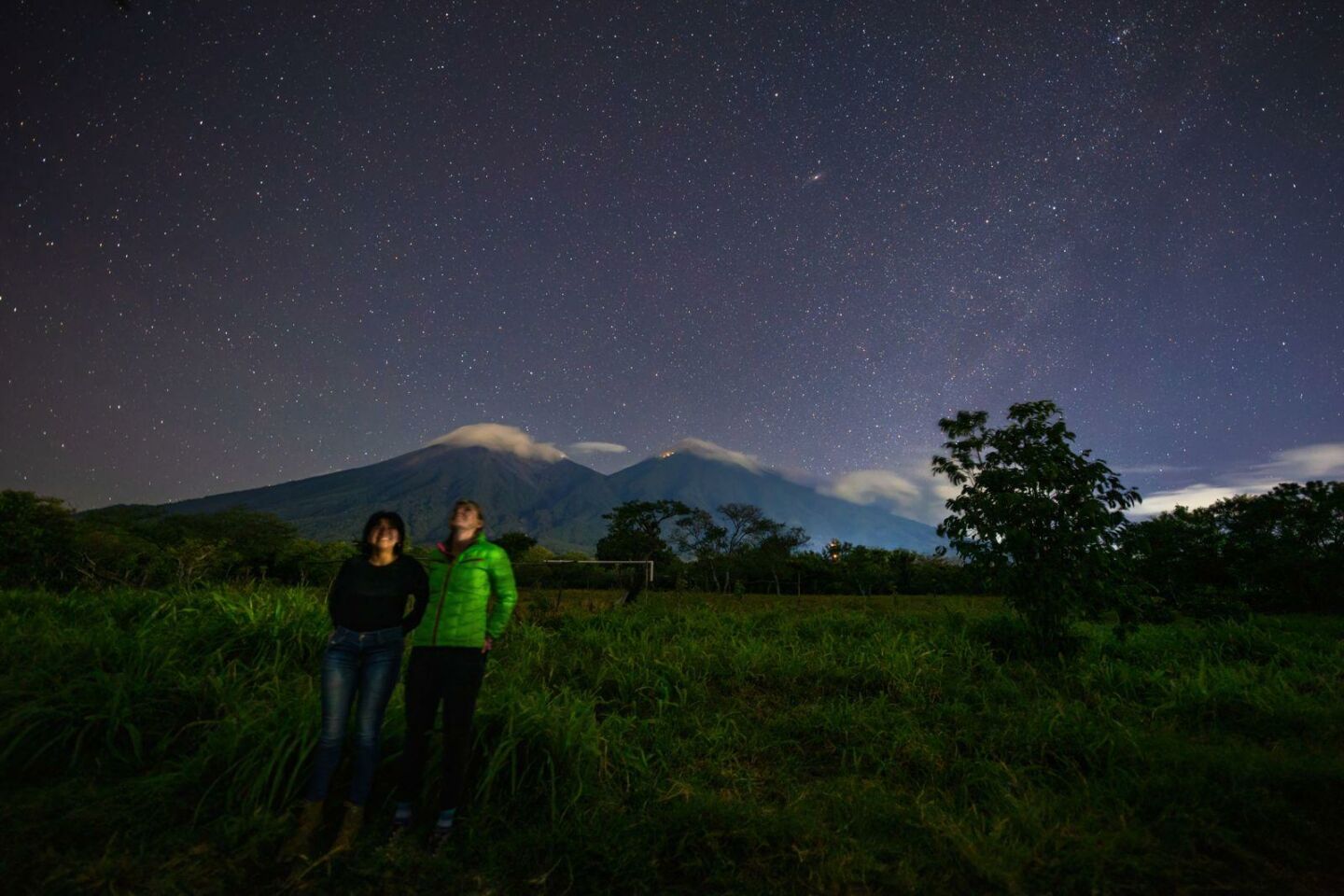
What Does Lettuce Have To Do With My Night Sky?

by John C. Barentine, Ph.D.
Director of Public Policy
Residents of cities in towns in North America and Europe increasingly report strange glows in the night sky. Arizonans see their skies light up bright purple. What’s going on? Is it the aurora, or maybe an alien invasion?
It turns out the answer is much closer to earth than sky. Greenhouse horticulture is increasing, and with it a dependence on new lighting technologies intended to increase crop yields. But light pollution is coming, too. Can greenhouses and dark skies peacefully coexist? And what does this mean for the dark-sky community?
What we know (and don’t know)
Two things are on the rise in certain parts of the world: construction of greenhouses for the cultivation of certain crops, and complaints by people living near them about light spilling out of greenhouses at night. This trend seems to mirror the rise in greenhouse construction fueled by consumer demand for fresh, local produce and cannabis where its cultivation and sale are permitted by law. In turn, local governments lured by the prospect of economic growth are creating favorable conditions for the installation of new greenhouses. But with this comes the prospect of disputes between neighbors, harm to local wildlife, and the steady erosion of night sky quality in and around cities.
There’s essentially no scientific research on the external light impacts of greenhouses, so we really don’t know how significant the problem is. In particular, the degree to which light escaping from greenhouses at night specifically impacts the night sky is unknown. But applying what we know about other kinds of light, lighted greenhouses could be a big problem for the outdoor environment at night. For instance, clouds and snow both ‘amplify’ skyglow, and in combination can raise sky brightness up to 3,500 times above the natural background level. So we have cause to think that the impacts of greenhouses will be higher in more cold and cloudy climates.
The horticulture industry is aware of the issue, and articles continue to appear in its trade publications. One of them, Greenhouse Canada, recently suggested that the concern about light pollution from greenhouses “is becoming widespread enough that it would be prudent for growers planning new builds or expansions to consider their location and make plans accordingly.” The lighting industry that supplies new and improved horticultural lighting products is also taking notice, but it too admits that “it’s important to keep light where it achieves the most benefit.”
Government largely has yet to confront the situation, in part because it’s not clear how to regulate the light that greenhouses produce. Regulations are currently few, since many jurisdictions consider greenhouses “indoor lighting” not subject to provisions intended to reduce light pollution.
The nature of the problem
Lighted greenhouses in areas that are dense with people are creating conditions of light trespass. Bright glows in unusual colors over greenhouses are sometimes considered by neighbors as a nuisance. And these factors are intensifying disagreements over how best to balance beneficial economic activity against detrimental effects on the quality of nights in areas where greenhouses are becoming prevalent.
The design of greenhouses is at the heart of the issue: intended to collect sunlight during the day and trap heat, greenhouse windows become a problem at night by letting indoor light out. LED lighting intensifies the problem by making light cheap to consume; it is also tunable to best match the colors of light that accelerate plant growth. With few regulations in place to control greenhouse light emissions, and a friendly business climate in many areas, operators are choosing increasingly to light all or most of the night with few, if any, legal consequences.
What can be done
There are two approaches to solving the problem of light escaping from greenhouses at night: either avoid lighting them overnight, or install retractable window coverings in order to contain light within the building.
Window coverings have a number of benefits aside from reducing light pollution. For one, covering windows at night assists with heat retention during the overnight hours. Retained light is more useful for plants. Screening out light from one greenhouse may benefit plants growing in the one next to it. And systems for deploying covers can be automated, eliminating the need for human attention each day to open and close them. However, there is an immediate capital cost involved in the purchase and installation of window covering systems, as well as maintenance costs over time.
For now the best approach on the part of concerned residents may be to contact greenhouse operators directly and try to obtain their voluntary participation in light pollution reduction efforts, such as in suburban Concord, New Hampshire, U.S. Residents can also monitor land use planning in their cities and towns, even if no local policies to regulate greenhouse lighting exist. For now, we are encouraged by industry overtures toward developing a system of voluntary best practices for greenhouse operations to include preventing light from escaping greenhouses at night.



















